
Natural loose parts play. Loose, Parts, Play, Studio, Natural, Studios
Water is a brilliant loose part. It has an infinite number of uses. Some different types of water lead to different types of learning. The main sorts are: Ice, either in lumps or cubes, or mashed up - great for exploring and investigating in a big tray. Ice with loose parts frozen into it - e.g. cogs, corks or pegs Colored water Snow

5 Natural loose parts for outdoor learning
Natural loose parts: Open-ended natural materials with few or no rules or stipulations about how to use them. Natural loose parts can include but are not limited to: rocks, sticks, twigs, mud, sand, dirt, logs, tree cookies, leaves, seeds, water and more. An example of synthetic loose parts would be Lego bricks or K'nex pieces.
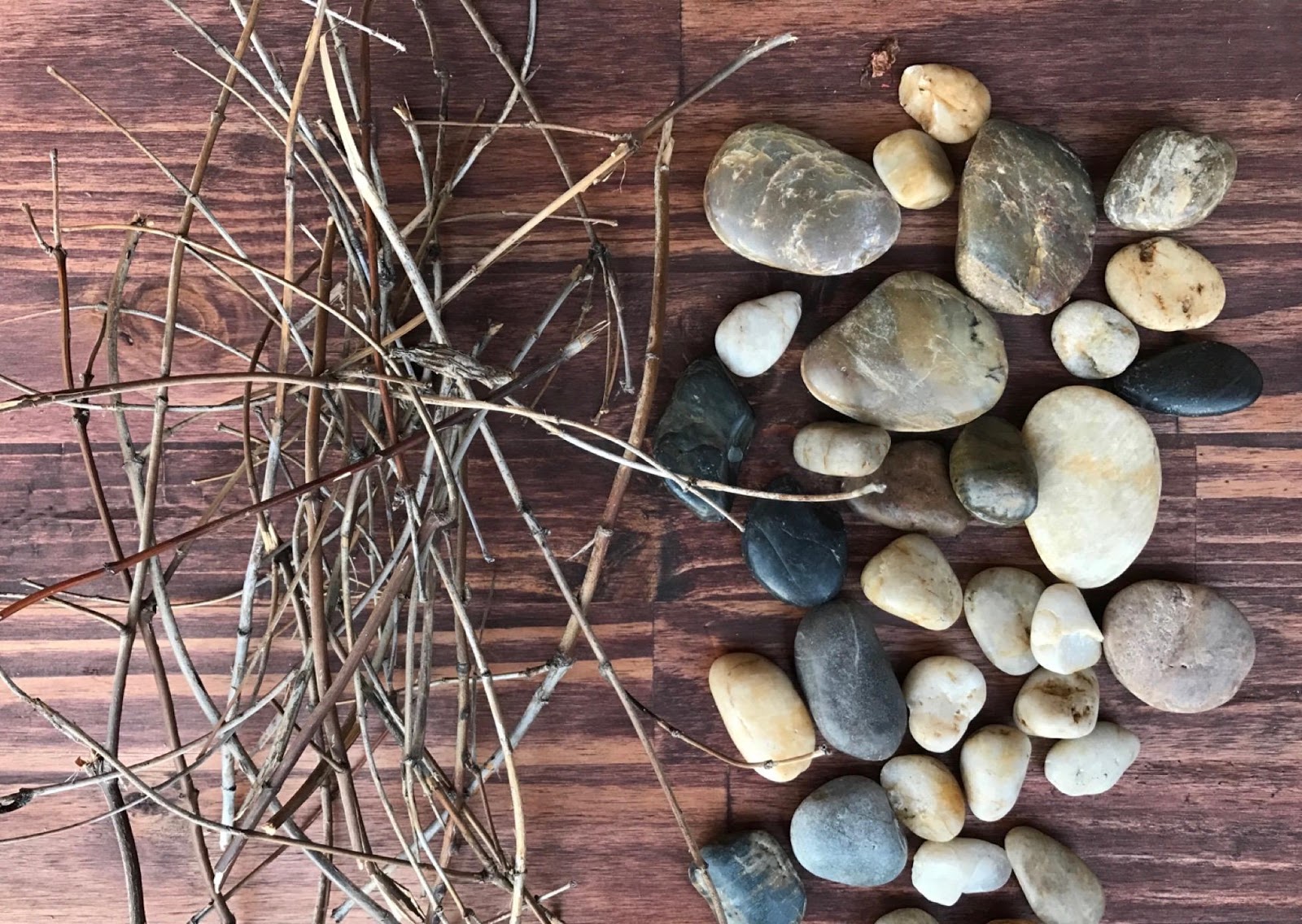
Loose Parts Let's Play With Nature!
What's the benefit of natural loose parts? The term 'loose parts' was first used in 1971 by an architect named Simon Nicholson. He described loose parts as 'variables' in an environment that could be moved around and tinkered with.
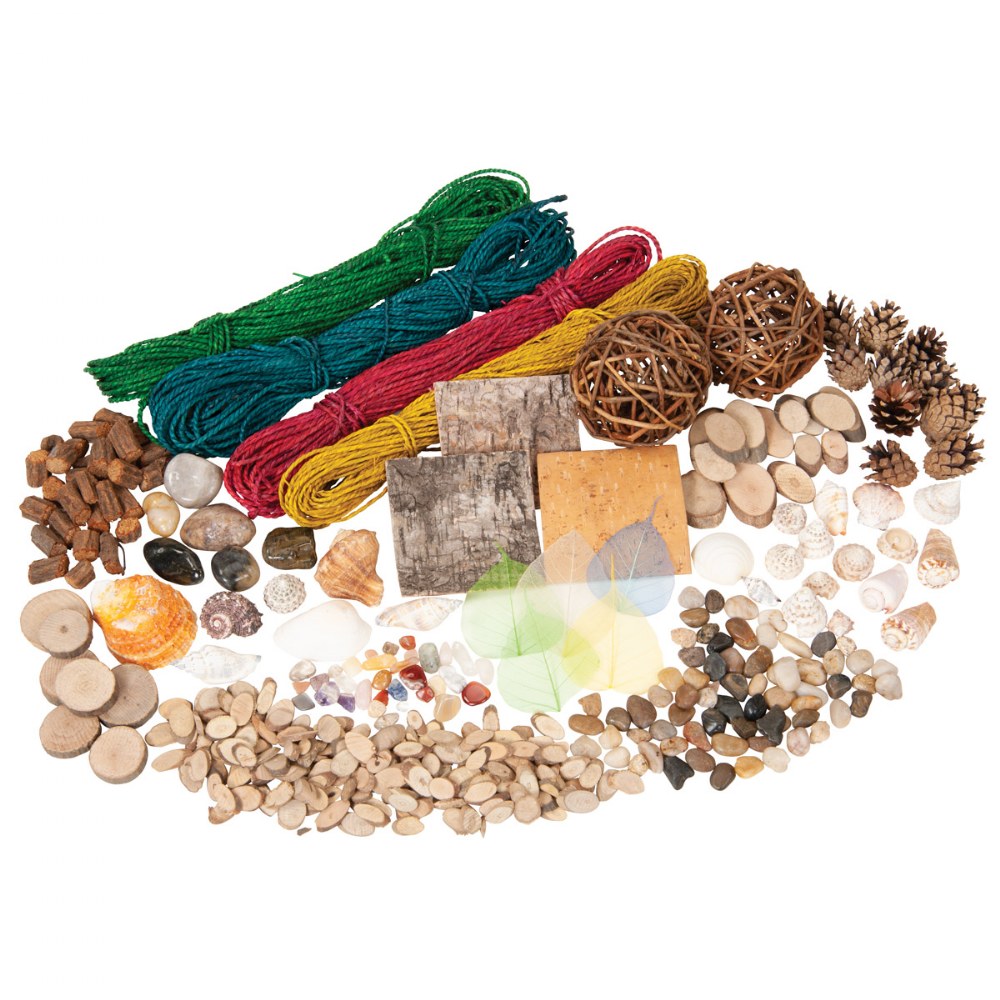
Natural Loose Parts Starter Kit
Discover what loose parts are and why you need them in your classroom. Download a FREE list of over 150 loose parts resources you can use to set up age appropriate investigation areas and learning invitations to start loose parts play in your early years setting.

Natural loose parts Paddington Children's Centre
Loose parts are materials that can be moved, carried, combined, redesigned, lined up, and taken apart and put back together in a range of ways. They are items with no instructions or directions that can be used alone or combined with other materials. A few examples of loose parts are listed below:

Natural loose parts Natural playground, Natural play spaces, Outdoor
Natural Loose Parts Starter Kit Write a review Item: 63824 Status: In Stock $89.95 Qty.: Add to Cart Add to Wish List Have a Question? Chat Live Now! Truck Delivery Kaplan Exclusive Description Ratings & Reviews Warning: Choking Hazard - Small Parts. Not for children under 3 years. 3 years & up.

Natural Loose parts are easy and inexpensive to collect looseparts
The natural world in all its simplicity and complexity affords children a rich allure of play and learning experiences. Nature organically produces a spectrum of loose parts that exhibit patterns and sequences not easily replicated in man-made materials. Consider the intricate patterns of a pine cone or the spirals of an unfurling fern.
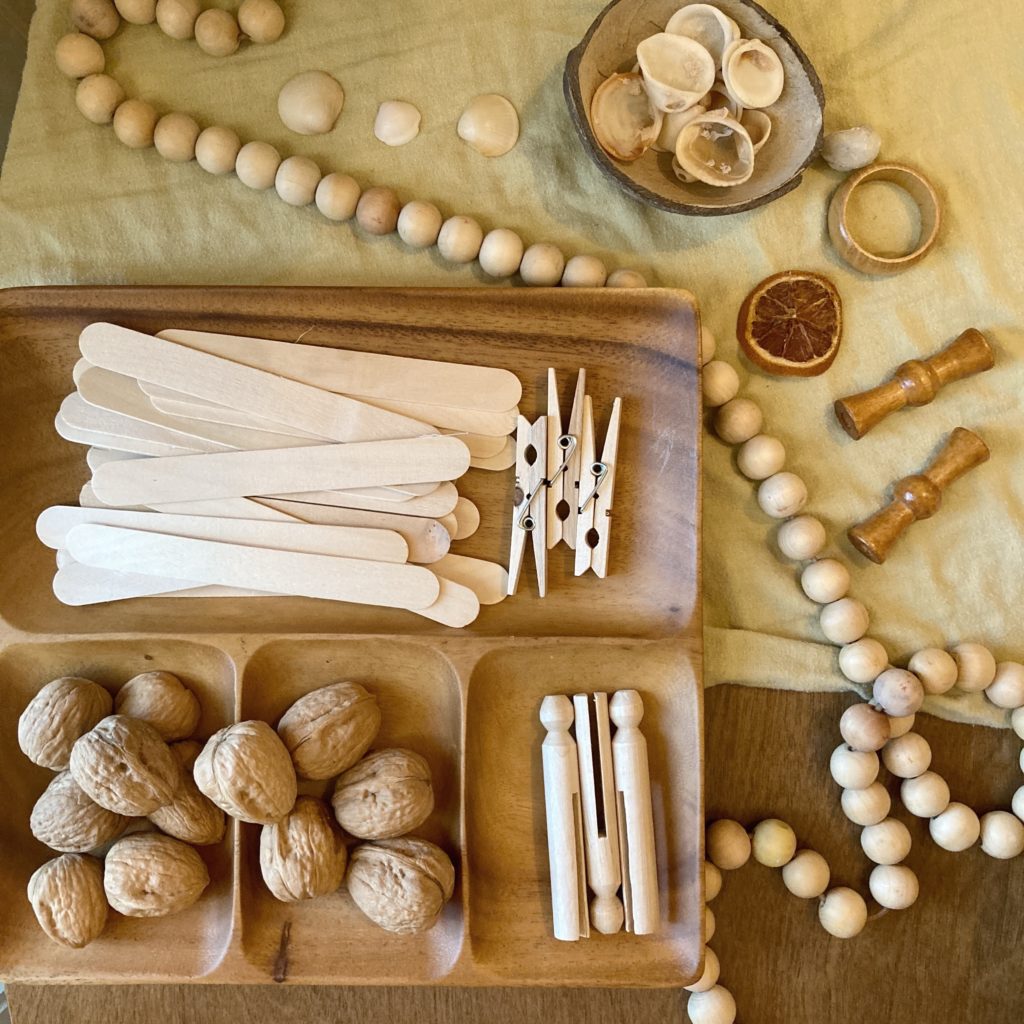
Natural Materials for Loose Parts Play · acorn to oak
Loose parts play lends itself to children gaining the benefits of taking healthy risks. Children explore natural spaces around them to look for loose parts to build with. Stacking and climbing also comes with a low-to-moderate level of risk, as children will stack items, then test their structure out for sturdiness. 9- Sense of Pride

Using natural loose parts for play Little Lifelong Learners
1. Creating Character Portraits This loose parts play idea is fantastic for making all sorts of goodies and baddies. You can use picture frames and create portraits in them using loose parts from tinker trays. Or you could build the portraits with larger loose parts on the ground outside.
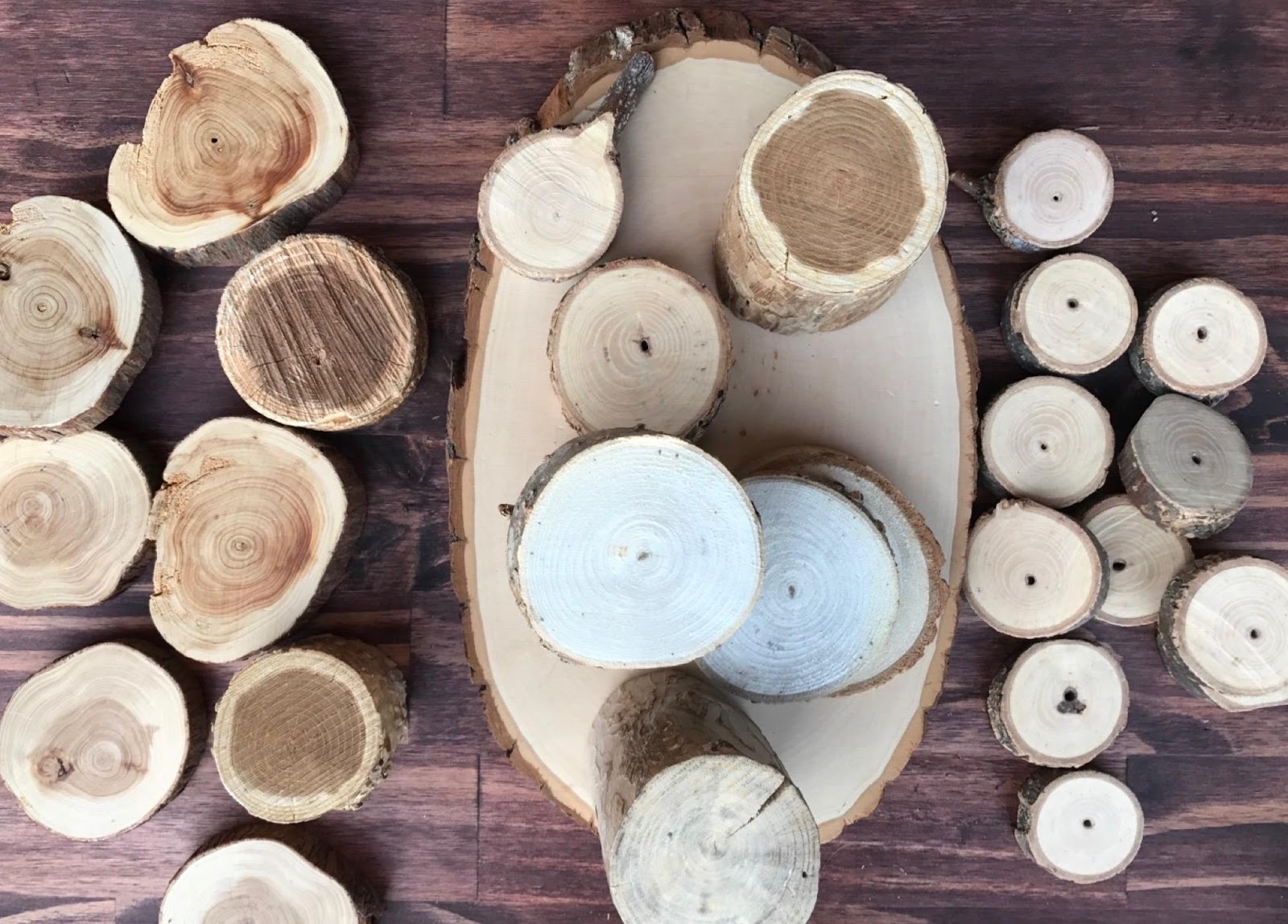
Loose Parts Let's Play With Nature!
Natural loose parts include a variety of natural objects such as sticks, stones, shells, mulch, pine cones, driftwood, "tree cookies," fallen leaves, acorns, and similar seeds, and their seedpods.
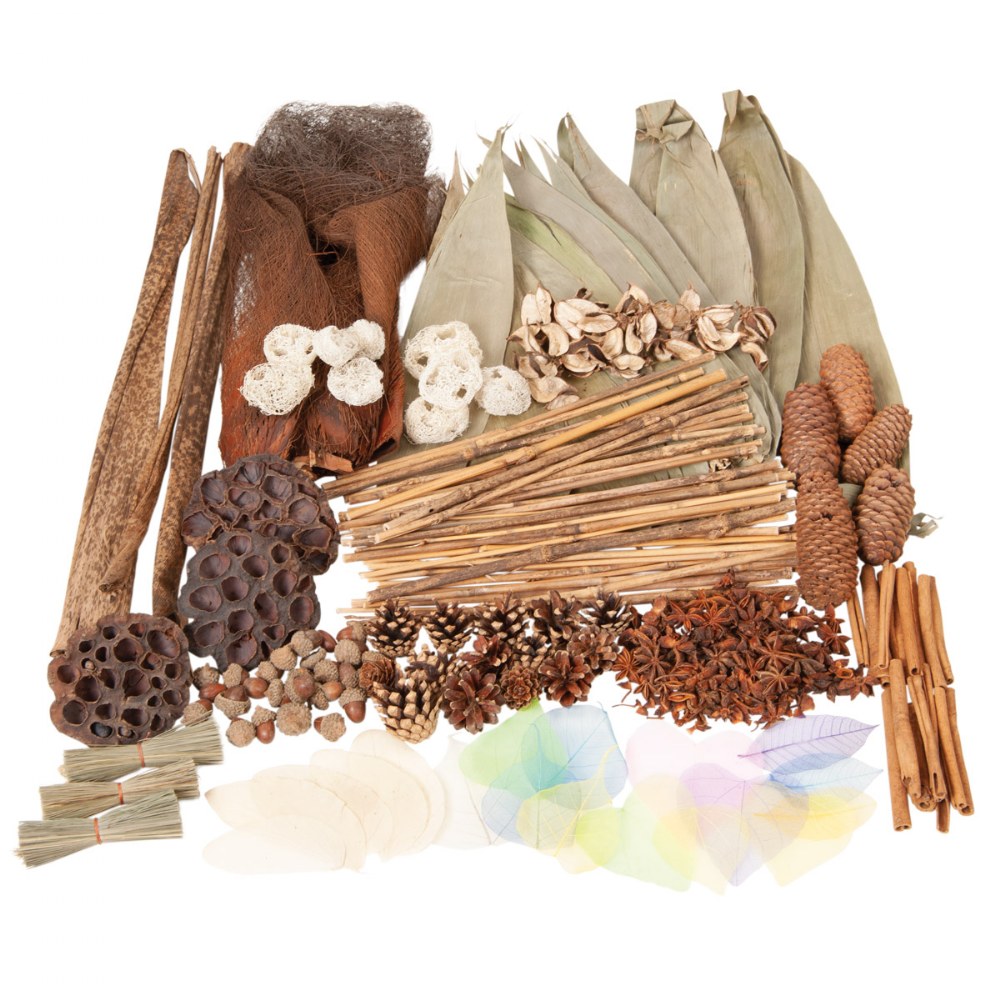
Natural Botanicals Loose Parts Kit
Nature-Based Loose Parts! Pinecones and sweet gum balls picked up from a walk. Wood cookies cut from fallen tree branches. Sticks and rocks found on a walk in the woods. Seashells donated by a girl who went to the ocean. Acorns picked up on a nature walk. Dried wildflowers found in the field. Dehydrated oranges and grapefruit.

Loose Parts are so beautiful especially ones that are found right in
This form of open-ended play has many benefits- it allows children to take the lead and to create their own designs and structures without adult guidance. In general, loose parts play offers three significant benefits-. It stimulates creativity. It supports constructional thinking. It enhances spatial awareness.

Patterning with natural loose parts. loosepartsplay loosepartstheory
Find out what natural loose parts are and how you can use easily sourced loose parts from nature and get started with Reggio inspired natural loose parts play in your learning enviroment today. Discover exactly what natural loose parts are and the benefits of using them in your learning invitations in kindergarten and preschool.
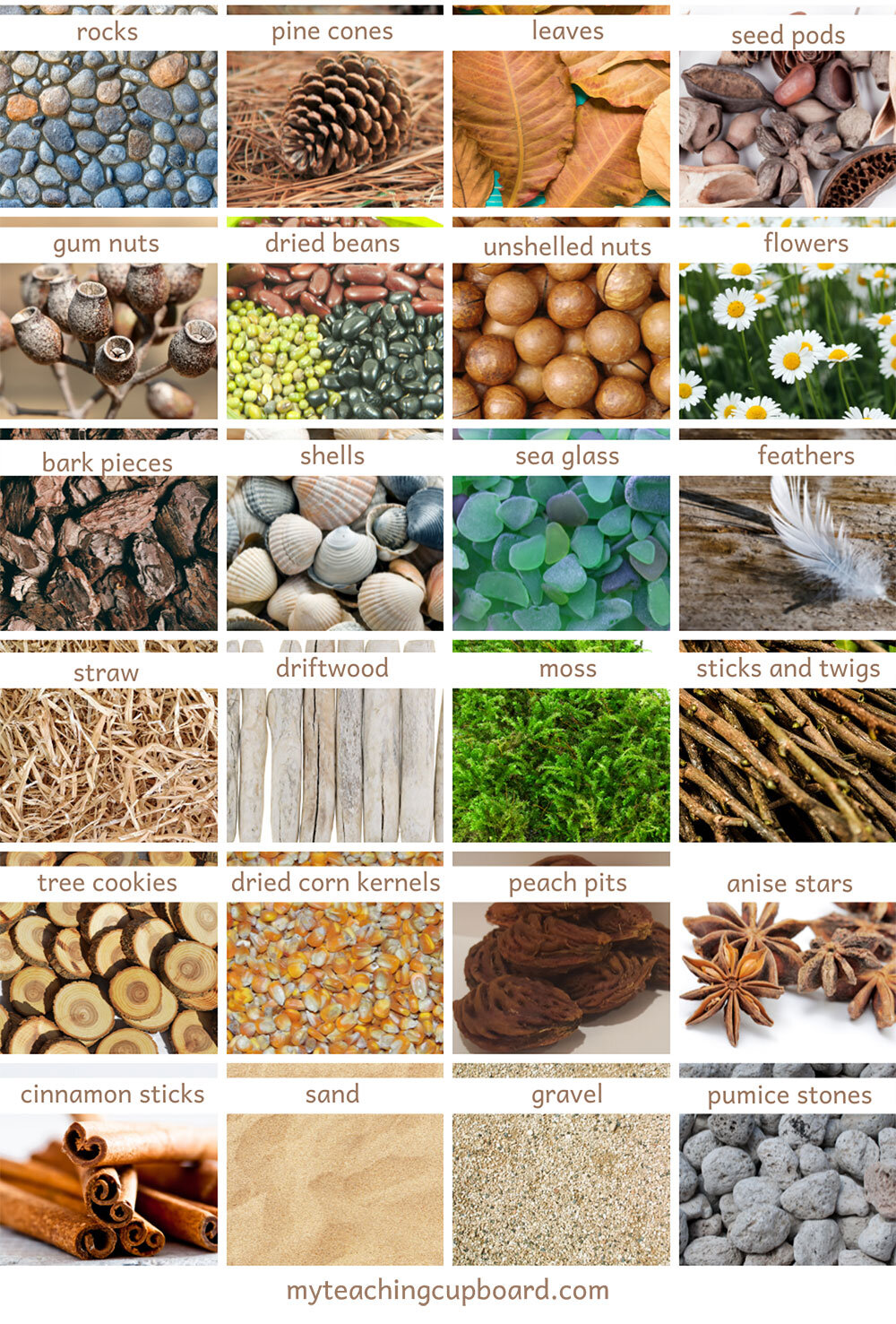
Loose Parts Resources — My Teaching Cupboard
What are Loose Parts? Loose parts are objects and materials that children can explore, experiment with, and manipulate in different ways. They stimulate the senses and invite children to play. I explore all about loose parts and their benefits in our article The Magic of Loose Parts: FAQs from Teachers & Parents.

Excellerations® Natural Loose Parts Kit of 4
Loose parts can be natural or synthetic. It is helpful to think of loose parts as something that will help children inspire imagination and creativity on their own terms and in their own unique way. Giving meaning to loose parts

PAINTING WITH NATURAL LOOSE PARTS Montessori Nature
And the best part? They're totally sustainable, so you can get your playtime on without hurting the environment. So, get ready to explore the awesome world of natural loose parts! We'll check out some super cool rocks, twigs, leaves, gum nuts, and shells that you can use to create all sorts of amazing playtime adventures.